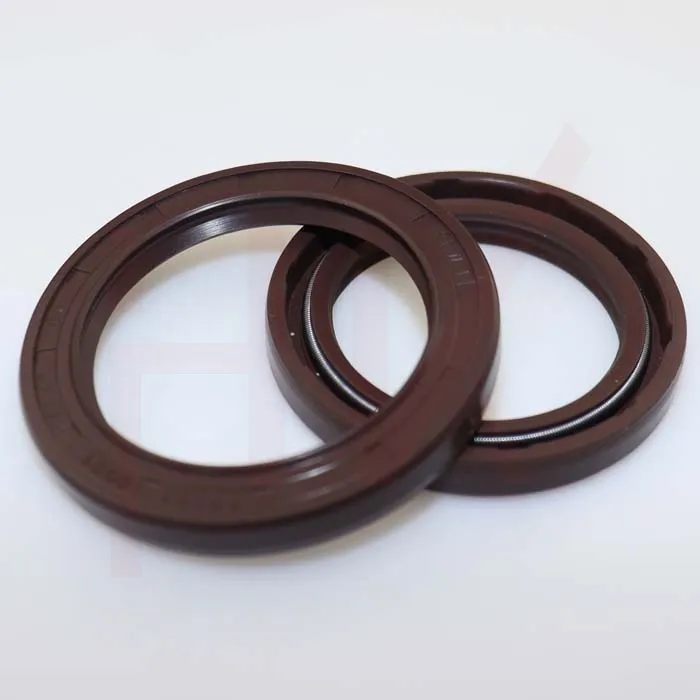Nën . 09, 2024 22:42 Back to list
Shaft Seal Solutions for Enhanced Performance and Durability in Mechanical Systems
Understanding Shaft Wiper Seals Essential Components for Mechanical Systems
In the world of mechanical engineering, the integrity and functionality of various moving parts are crucial for the overall performance of machinery. Among the many components that contribute to smooth operation, shaft wiper seals play a vital role. These seals may appear to be simple rubber or polymer rings, but they are essential in preventing contamination and maintaining the integrity of hydraulic and pneumatic systems.
What are Shaft Wiper Seals?
Shaft wiper seals, commonly known as wiper seals or dust seals, are designed to keep contaminants such as dust, dirt, and moisture from entering machinery and degrading the internal components. They are typically installed on the exterior of a casing or housing, at the entrance of a shaft that rotates or slides. Their main function is to wipe away any contaminants that may come into contact with the shaft during operation.
These seals are usually made from durable materials such as Nitrile, Viton, or polyurethane, which can withstand various environmental conditions. The choice of material depends on several factors, including the type of fluids involved, temperature ranges, and potential exposure to chemicals.
Importance of Shaft Wiper Seals
The significance of shaft wiper seals cannot be overstated. Their primary function is to protect moving parts from contaminants that can lead to wear and tear, premature failure, and costly downtimes. Here are several reasons why wiper seals are indispensable in mechanical applications
1. Preventing Contamination One of the most important roles of shaft wiper seals is to keep foreign particles out of sensitive areas. In hydraulic systems, for instance, the ingress of dirt can result in piston sticking, improper functioning of valves, and significant wear on components such as cylinders.
2. Maintenance of Lubrication Wiper seals also help maintain the lubrication of moving parts. By preventing contaminants from entering, these seals ensure that the lubricants remain effective, thereby reducing friction and wear.
3. Extending Equipment Lifespan By safeguarding the internal mechanisms of machines and ensuring optimal lubrication, wiper seals contribute to the longevity of equipment. This results in reduced maintenance costs and less frequent replacements, translating to savings for businesses.
shaft wiper seal

4. Safety Considerations In certain applications, contamination can pose safety risks. For example, in the automotive industry, any ingress of dirt or moisture can compromise the performance of braking systems or hydraulic actuators, leading to potentially dangerous situations.
Types of Shaft Wiper Seals
There are various designs of shaft wiper seals, each suited to specific applications and environments. Here are some common types
- Single Lip Seals These are the most basic type, featuring a single lip that wipes the surface of the shaft. They are suitable for light-duty applications.
- Double Lip Seals This design includes two wiping lips, providing enhanced sealing capabilities. They are often used in higher-stress environments where more robust protection is necessary.
- Spring-Aided Seals These seals incorporate a spring mechanism that maintains contact with the shaft, ensuring a better seal even under varying pressure conditions.
- Integrated Dust Boots Some designs combine wipers with dust boots, providing additional protection against debris while also accommodating axial movement.
Installation and Maintenance
Proper installation of shaft wiper seals is crucial for their effectiveness. They must be mounted correctly to avoid distortion or misalignment, which can lead to leaks and failures. Regular maintenance checks can help identify wear or damage, ensuring that these protective components are replaced before they fail completely.
In summary, shaft wiper seals are fundamental components in numerous mechanical systems, offering protection against contamination, enhancing lubrication, and promoting overall equipment longevity. Understanding their function, types, and the importance of proper installation can lead to more reliable and safer machinery operations. As industries continue to evolve and demand higher efficiency and reliability, the role of shaft wiper seals will undoubtedly remain paramount.
-
TCN Oil Seal Metal Ring Reinforcement for Heavy Machinery
NewsJul.25,2025
-
Rotary Lip Seal Spring-Loaded Design for High-Speed Applications
NewsJul.25,2025
-
Hydraulic Cylinder Seals Polyurethane Material for High-Impact Jobs
NewsJul.25,2025
-
High Pressure Oil Seal Polyurethane Coating Wear Resistance
NewsJul.25,2025
-
Dust Proof Seal Double Lip Design for Construction Equipment
NewsJul.25,2025
-
Hub Seal Polyurethane Wear Resistance in Agricultural Vehicles
NewsJul.25,2025
-
The Trans-formative Journey of Wheel Hub Oil Seals
NewsJun.06,2025
Products categories
















